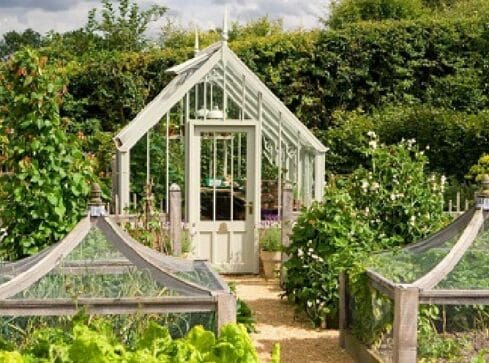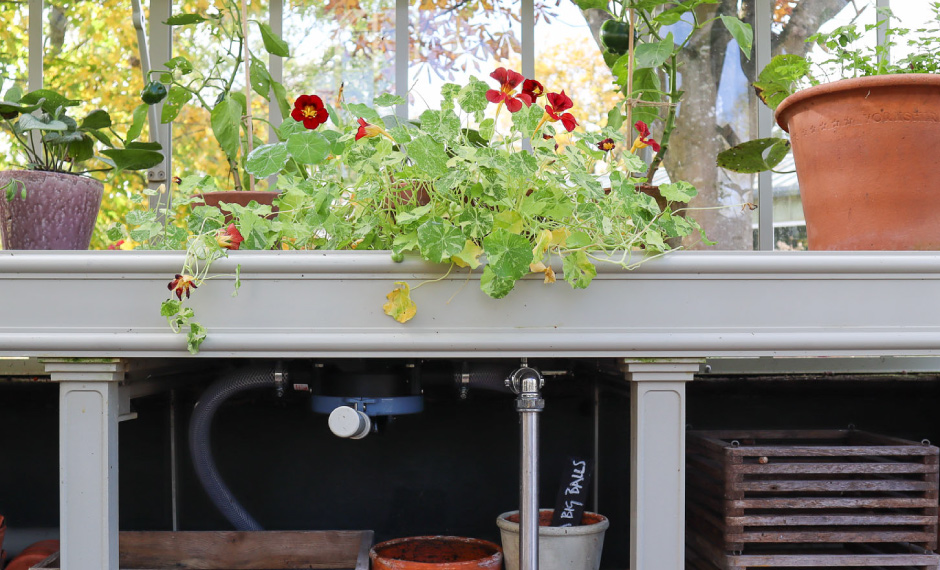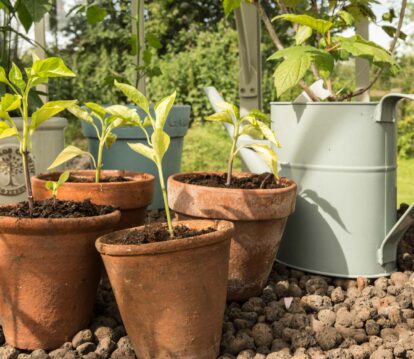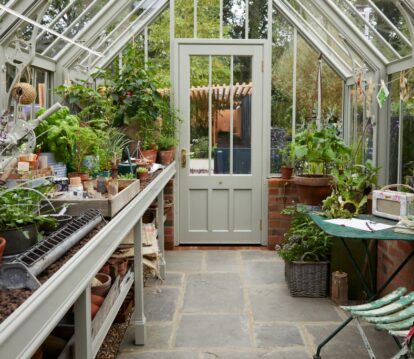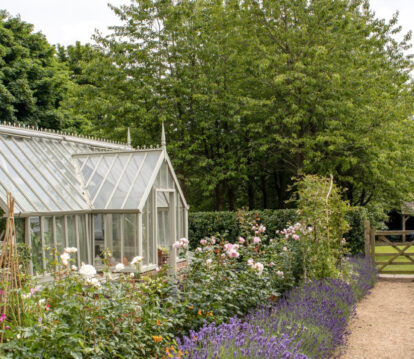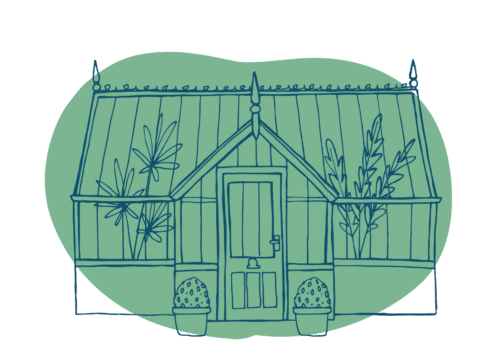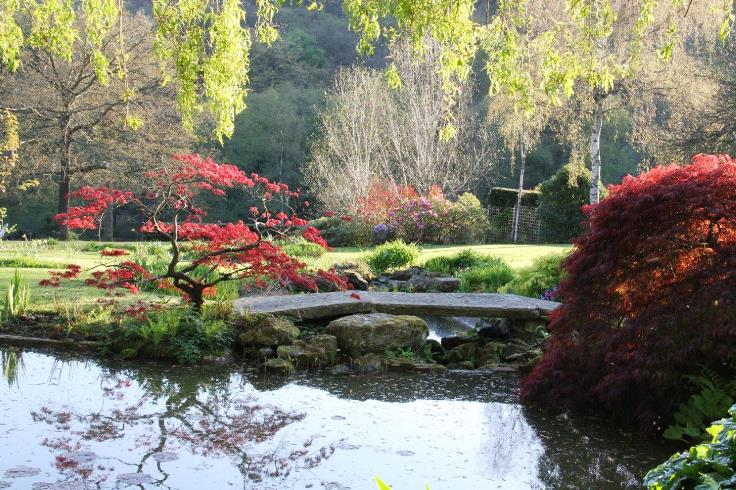
We were (just about) fortunate with the weather at Shalford House, Haslemere for our event last Thursday. Having attracted around forty local garden designers from the Society of Garden Designer cluster group, we were treated to the opportunity to hear not only how Sally Court FSGD had handled the immense “clearing,” project all those years ago, but also how Head Gardener James Stevenson had overseen the garden mature and change over the last ten years of his tenure.
As Sally described her years of working at Shalford we were taken on her journey of what can be achieved with space. “Shalford represents a very special part of my life and is in my heart”, said Sally.
The garden is open throughout the year at the garden’s key times under the National Garden Scheme, which is well worth a visit if you are interested in the management and design of landscape. Initially the house looked down towards acres and acres of conifers – which is quite typical of the area and represents what was a cash crop during the 50’s and 60’s. However the conifers were never harvested and simply formed a dense mass, blocking light and stopping the growth of any plants or indeed birds. The absence of birdsong was noted by all who knew the site originally, because of the lack of native trees.
Another less pleasant feature of the original site was the number of stagnant ponds and water pits – all smelly and oily from the conifers. Sewage outlets were found in the ornamental pond – or what passed for one.
A huge clearance of the site began but because of the muddy slopes and water, there was no safe access on and off the property, so quite a lot of burning was necessary. It was only when pine trees came down that vistas opened up and the huge grounds were revealed. The house itself seems relatively small and intimate within the space – which is just the way the owners like it.
From the top of the land where the house sits, to the bottom of the valley where an existing pool was successfully reclaimed, is seventy five feet and a reasonably (but walkable) steep gradient. The initial project of landscaping the 5 acres closest to the house was followed by plans to landscape the 10 acres of woodland beyond. Over the time Sally worked on the project a further 30 acres of woodland were purchased to the rear of the house. The actual case study of what the client brief was and how Sally tackled it ,will be the subject of a future case study.
The pergola when initially built seemed huge and the clients voiced their fears and concerns. Sally explained that because the ground had essentially been razed any architectural structure would look out of context – the land needed to settle around it and plants needed to start their rampage to create the naturalised setting desired.
Sally found the project easier to handle (and to contract) when broken into sections, whilst retaining a sense of the over all structure. Each project was then able to exist in its own right but co-exist within the overall framework – plus ideas were then adapted to organically flow into each other. Woodland pathways created a physical connection and also a way to navigate.
Sally describes the client as having no firm views on how things should be done and was keen to experiment with possibilities – “experimenting with approval”, as the love of exploration was shared, the client being a keen and passionate gardener and lover of plants.
Gardening on clay at Shalford and with an acid soil there have been some surprising successes and some plants which just haven’t thrived. James Stevenson took up the story of Shalford Gardens detailing how the original grass islands had eventually been replaced with a more Piet Oudolph style planting with perennial flowers and grasses which create more of a prairie bed. Many of these plants came from Marina Christopher and Phoenix Perennials, who focussed on moisture loving plants and supplied between 3 -5,000 plants over one year.
The challenge of water in the wrong place and springs popping up all over the land has continued with James and his 2 man team creating 2 more naturalised ponds during the 10 years he has been at Shalford.
James has his work cut out keeping self seeding plants from being rampant and taking over whilst encouraging other plants by propagating and protecting over winter under glass. Amazingly over 2000 plants are generated from the bespoke Alitex greenhouse which at this time of year(spring) is a tall order. In fact James comments that “We are starting to expect too much of our greenhouse with soft fruit overwintering, on-going propagation and the sowing of new seeds…Different plants need different temperatures which indicates we need to start zoning our plants growing under glass.”
The greenhouse was overflowing with plants and 1000 plants had already been moved into the gardens!
After a lovely lunch and time to wander the gardens we somehow managed to miss the forecasted deluge. Don’t miss the garden through the NGS scheme later this year.
For more information on Sally’s practise please click here.


